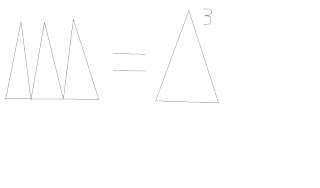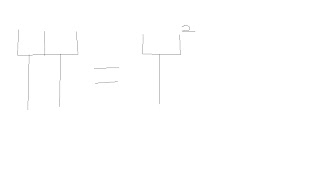Do NOT use this Weblog for evil purposes! It is very rude, because this Weblog needs to be protected against the REAL public enemy, not who YOU, the media audience, think is the public enemy! Using this Weblog for socially illegal purposes (such as murder and pornography) is subject to the time in prison indicated by the crime! So I suggest YOU, the actual public enemy (exclusively either a criminal or a bully), need to STAY OUT!
music player
Monday, December 16, 2013
The Internet is Not Something You Just Dump Something On!
No! It's a computer program! It doesn't have a brain like we do! It also doesn't always have people who put something that finds my parents right! Often when it checks, it finds them WRONG! Yet, there's a problem with parents sometimes. When you're reading any Watchtower magazines, some people think that they're right! We think that they're WRONG! People put unnecessary stuff there to trick others. They also put inappropriate content there for the same reason! And, my trusty Blocksi blocks it all! Thank you, Blocksi, for protecting employees, students, and families from the inappropriate content!
Sunday, October 20, 2013
About Ujucar
The Ujucar is a flying car. Its name is derived from the Spanish word azucar, meaning "sugar," in turn from the Korean word uju, meaning "universe," and the Latin word carrus, meaning "chariot." It is red, with blue doors, and a light-blue flying light.
Ujucar is a space car, due to the prefix Uju-, which means "universe" in Korean. And this is the car that can go at six hundred light-years per hour, fast enough for an all-hour trip to Kepler 22b.
.bmp) |
| I, Timothy Robert Carrington, am the driver of the Ujucar. This is its left row. |
.bmp) |
| This is its right row. |
 |
| These black buttons are its direction buttons. The white button makes Ujucar fire its weapons. |
 |
| This flying car is 5256000 times faster than light. |
Monday, October 14, 2013
The United Religions
The United Religions is an idea that started on October 10, 2012, while I was making the first katakana dreidel. I found out the idea of a non-Jewish Hanukkah. There was also the idea of a non-Christian Christmas. But, I had a big idea! To unite all holidays! That meant that all religions must be together! No problem! I've invented a non-Jewish Hanukkah! But, what if somebody invented a non-Christian Christmas? The person's religion has to be other than Christianity, such as a Yutaejasosin, a descendant of the Jews.
 |
| This katakana dreidel was made on July 8, 2013. It is 0.25 years old. |
Friday, October 11, 2013
$10^100 Is A Lot of Money!
A googol dollars is a lot of money! Compared to a vigintillion dollars. Or a decillion dollars. What is it in other languages?
In Korean, it's 구무량대수 딸라 gumuryangdaesu dalleo. Etymology: From 구 gu, meaning "hundred nonillion," and 무량대수 muryangdaesu, meaning "hundred unvigintillion."
In Japanese, it's 溝無量大数 ドル kōmuryōtaisū doru. Etymology: From 溝 kō, meaning "hundred nonillion," and 無量大数 muryōtaisū, meaning "hundred unvigintillion."
In Hebrew, its גוגול דולר gugol dolr.
In Korean, it's 구무량대수 딸라 gumuryangdaesu dalleo. Etymology: From 구 gu, meaning "hundred nonillion," and 무량대수 muryangdaesu, meaning "hundred unvigintillion."
In Japanese, it's 溝無量大数 ドル kōmuryōtaisū doru. Etymology: From 溝 kō, meaning "hundred nonillion," and 無量大数 muryōtaisū, meaning "hundred unvigintillion."
In Hebrew, its גוגול דולר gugol dolr.
 |
| A lot of money! |
Sunday, September 1, 2013
Blog Rules
NO INAPPROPRIATE CONTENT ON THIS BLOG!!!!!!!!!! (That's rule number 5 in the Timopedia articles.)
Tuesday, August 13, 2013
Ieungssangieung Equals Ieung Cubed
The thirty-fourth and last part of my Hangul + Math equation. Cubing Ieung makes Ieungssangieung. Ssang- is a prefix that means "twin" or "double" in Korean.
Gabyeounbieupssanggabyeounbieup Equals Gabyeounbieup Cubed
The thirty-second part of my Hangul + Math equation. Cubing Gabyeounbieup makes Gabyeounbieupssanggabyeounbieup.
Ssanggabyeounbieup Equals Gabyeounbieup Squared
The twenty-fourth part of my Hangul + Math equation. Squaring Gabyeounbieup makes Ssanggabyeounbieup.
Ssanggiyeok Equals Giyeok Squared
The eighteenth part of my Hangul + Math equation. If you square Giyeok, then it becomes Ssanggiyeok.
Gabyeounbieup Equals Bieup With Long Bottom Line
The seventeenth part of my Hangul + Math equation. If you put the middle line of Bieup turned below the Bieup bottom line, then it becomes Gabyeounbieup.
Bansiot Equals Siot Minus Bansiot
The fifteenth part of my Hangul + Math equation. Siot is between two Bansiots. Bansiot means "half Siot" in Korean. It looks like a triangle.
Bieup Equals Mieum Plus Giyeok
The twelfth part of my Hangul + Math equation. This picture is because if you add Mieum with Giyeok, you get Bieup.
Rieul Equals Digeut Plus Giyeok
The eleventh part of my Hangul + Math equation. Digeut looks like the Japanese katakana ko, only reversed to look like our capital letter C, but robotic.
Chieut Equals Jieut Plus Giyeok
The tenth part of my Hangul + Math equation, with two new Korean letters-- Chieut and Jieut. Giyeok, meet Chieut and Jieut. Jieut looks like the Japanese katakana su because it features a seven with a foot. Chieut features the same thing, but that with a top line so that it looks like part of the Japanese katakana ne, while Giyeok looks like the Japanese katakana fu, but robotic.
Siot Equals Bieup Plus Giyeok
The ninth part of my Hangul + Math equation, with a new Korean letter-- Bieup. Siot and Giyeok, meet Bieup. Giyeok looks like a robotic English digit 7. Bieup looks like a Mieum with antennae.
Digeut Equals Nieun plus Giyeok
The eighth part of my Hangul + Math equation, which is the same as the first part, but with a plus sign.
Rieul Equals Nieun Plus Nieun
My Hangul + Math equation's seventh part. Rieul faces two Nieuns. Rieul, meet the two Nieuns. Nieun looks like one of our letters-- L. Rieul doesn't. It looks like an English digit 2, only robotic. That's because it came to be.
Hieut Equals Pieup Plus Giyeok
The sixth part of my Hangul + Math equation. Giyeok faces these two new Korean letters-- Hieut and Pieup. Giyeok, meet Hieut and Pieup. Pieup looks like a Greek letter pi reflected by a mirror. Hieut, like Ieung, uses a circle, which is only found on cursive Chinese characters.
Tieut Equals Kieuk Plus Giyeok
The fifth part of my Hangul + Math equation. Giyeok faces two new Korean letters-- Tieut and Kieuk. Giyeok, meet Tieut and Kieuk. Tieut looks like our capital letter E. Kieuk looks like our reversed capital letter F. These hangul look like Roman letters. Tieut is derived from our capital letter E. Kieuk is derived from our reversed capital letter F. It's a good thing they look like our letters.
Mieum Equals Rieul Plus Giyeok
The fourth part of my Hangul + Math equation, with a new Korean letter-- Mieum. Her name means "beautiful voice" in the Korean language. Rieul and Giyeok, meet Mieum.
Siot Equals Rieul Plus Digeut
This is the third part of my Hangul + Math equation. And we introduce you a new Korean letter-- Rieul. Siot and Digeut, meet Rieul.
Monday, August 12, 2013
Ieung Equals Siot Plus Giyeok
This thing is part of my Hangul Plus Math equation. The second part. This is Ieung. And this is Siot. Giyeok, meet Siot and Ieung.
Friday, July 5, 2013
Giyeok Equals Digeut Minus Nieun
So, in our equation, we used three of the fourteen hangul consonants. There are fourteen of them, Giyeok, Nieun, Digeut, Rieul, Mieum, Bieup, Siot, Ieung, Jieut, Chieut, Kieuk, Tieut, Pieup, and Hieut. We have an intricuale equation over here and we've got to do so.
 |
| This image shows Giyeok, for speed, Digeut, for strength, and Nieun, for tiredness. |
Wednesday, June 26, 2013
About Sword Birds
This bird, the relative of the peregrine falcon, is preyed upon by explode moles, dancer porcupines, and the Rope Cat is an adult female. Before growing up, the prince lays his eggs. The females let the eggs hatch before getting eaten by their predators--explode moles, dancer porcupines, and the legendary Rope Cat. The males have no predators.
Enemies who touch the blade of this bird's head will be killed because of the caption. The males kill the predators of these birds. They eat robobugs, viruses, obesity shooters, and adult smear flowers. Although these birds won't attack the smear seeds, they paint this bird different colors from black. The sword birds rip up their parents instead.
 |
| These birds have a sharp point on top of their heads, so if an enemy touches it, it gets killed! |
Subscribe to:
Comments (Atom)
































